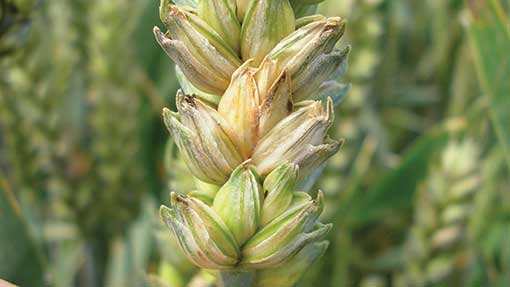Fusarium risk in cereals increases amid wet conditions

Warm, wet conditions have propelled fusarium levels in cereal crops, prompting the need for a fungicide treatment to halt the disease threat.
Erratic weather has meant some farmers are yet to apply their T3 sprays and experts warn it is now a major priority to prevent rejections and yield losses of up to 0.5t/ha.
Simon Edwards, professor of plant pathology at Harper Adams University, says with the infection period occurring from full head emergence to flowering, any window of opportunity should be taken.
“Hotspots usually occur in the east of England, spanning from the Wash up to Yorkshire, but this year we have had conducive conditions for such a long time we expect to see high levels across the UK.”
He warns loss of premiums in wheat going for human consumption is a major threat as growers run the risk of increased mycotoxins levels where the disease strikes.
See also: Wheat disease risk necessitates high fungicide rates
With harvest fast approaching, growers will need to spray as soon as the heads have fully emerged, according to Dr Edwards.
The best defence against the costly disease comes from a trio of actives – prothioconazole, tebuconazole and metconazole.
“Prothioconazole gives you a slightly longer window of activity and is also more active against microdochium, which could be an issue this season, particularly further north.”
Promising yield potential means growers shouldn’t worry about investing in the crop, says Prof Edwards, who reminds growers that foliar diseases will be equally as important.
“You are basically topping up your foliar control depending what your septoria, rust and mildew levels are like,” he says.

